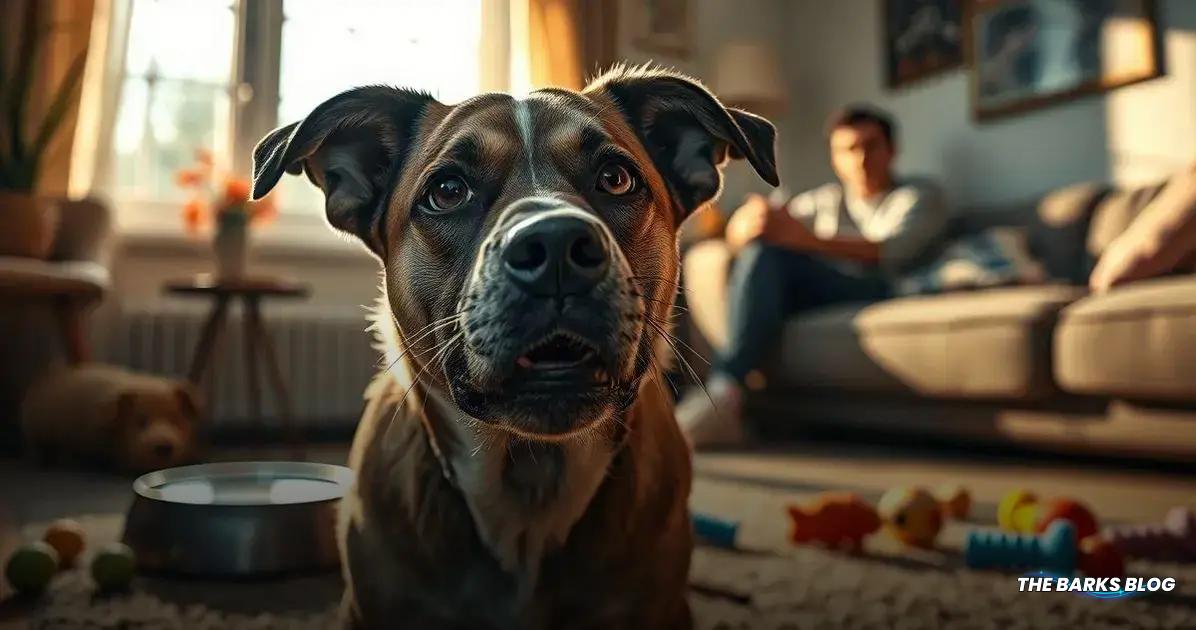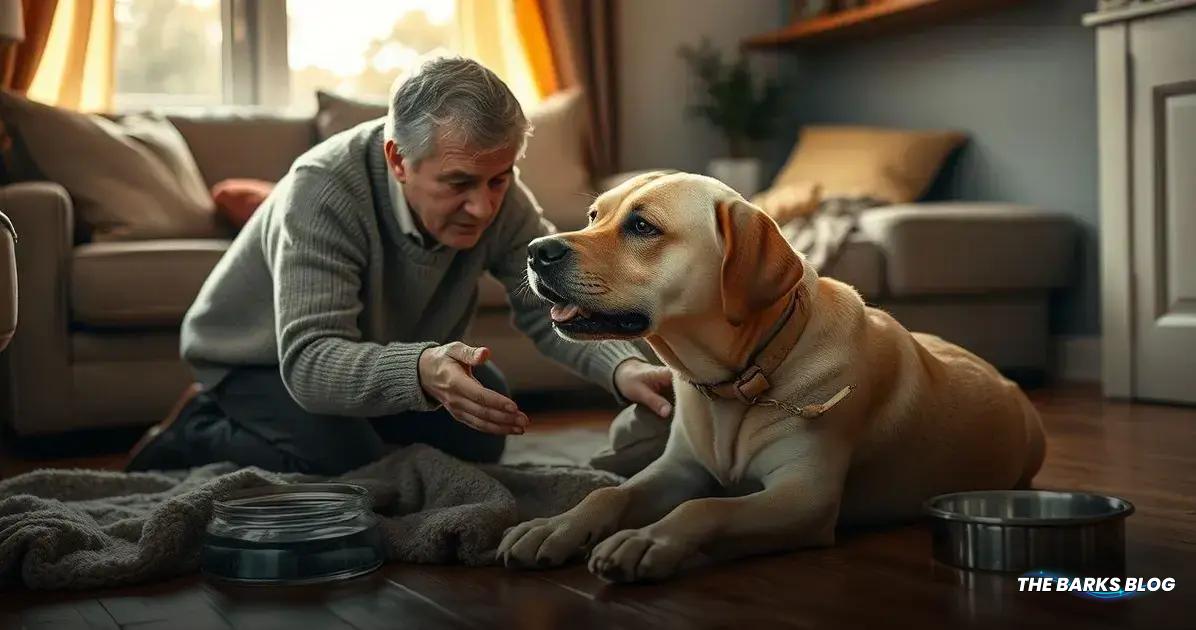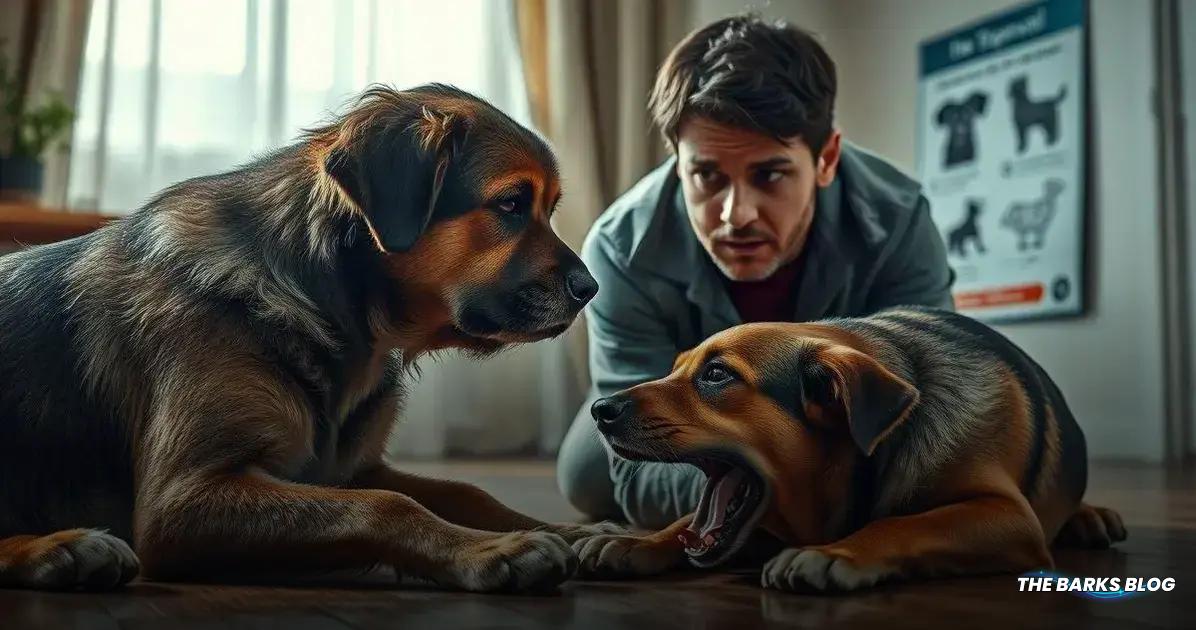Understanding why dogs gag and experience nausea is essential for pet owners. Gagging can result from excitement, nausea, or underlying health issues. Key signs to watch for include persistent vomiting and signs of distress, which indicate the need for veterinary attention. To help a gagging dog, stay calm, create a comforting environment, and closely monitor their symptoms. If nausea is present, avoid feeding them, ensure they stay hydrated, and slowly reintroduce bland foods. Always consult a veterinarian if symptoms persist or worsen, as timely intervention is crucial for your dog’s health.
Yes, dogs do gag, and it’s often just before they are about to be sick or bring something up. While gagging can happen for various reasons, it’s important to know when to intervene.

Common Reasons for Dog Gagging
Understanding the common reasons for dog gagging is essential for every pet parent. Gagging can occur for various reasons, and recognizing these can help you determine if your dog needs immediate attention or if it’s just a temporary issue.
1. Excitement: Some dogs, especially short-snouted breeds, may gag when they get overly excited. Their excitement can lead to difficulty in breathing, prompting a gagging reflex. If this happens, try to calm them down by speaking softly, petting them gently, or moving them to a quieter space.
2. Nausea: Gagging can also be a sign that your dog is feeling nauseous. This may occur with or without vomiting. If your dog is dry heaving, it’s a signal to monitor their condition closely. Withhold food for a few hours and then slowly reintroduce bland food like boiled chicken and rice if they seem to recover. If vomiting persists for more than 24 hours, contact your veterinarian.
3. Swallowing Too Quickly: Dogs that gulp their food or water may end up gagging as a result. This can be particularly common in multi-pet households where competition for food is high. Consider using a lick mat or feeding them separately to help slow down their eating.
4. Pneumonia: If your dog’s gagging sounds wet or mucusy, pneumonia could be the cause. Other symptoms may include lethargy and fever. It’s crucial to seek veterinary care if you suspect pneumonia.
5. Airway Blockage: A rare but serious cause of gagging is an obstruction in the airway. If your dog has been chewing on a toy or bone, they may have something lodged in their throat. If they show signs of distress or struggle to breathe, contact your veterinarian immediately.
6. Parasitic Infection: Some parasites, like roundworms, can cause chronic gagging by migrating to the lungs. Regular veterinary check-ups and preventative treatments can help avoid these infections.
7. Collapsed Trachea: More common in smaller breeds, a collapsed trachea can lead to gagging and coughing. If you suspect this, consult your vet for guidance on managing your dog’s condition.
8. Kennel Cough: If your dog has been in contact with other dogs, they may have contracted kennel cough, which can cause gagging and a harsh cough. Keep your dog away from other pups during recovery.
9. Heart Disease: In older dogs, persistent gagging along with other symptoms like reluctance to exercise and labored breathing can indicate heart disease. This requires immediate veterinary attention.
Recognizing these common reasons for dog gagging can help you respond appropriately and ensure your furry friend stays healthy and happy.

How to Help an Excited Dog
Helping an excited dog can make a significant difference in their comfort and well-being. Here are some effective strategies to calm your furry friend when they start to gag due to excitement:
1. Stay Calm: Your demeanor can greatly influence your dog’s behavior. If you remain calm and composed, it can help soothe your dog’s excitement. Avoid raising your voice or displaying frantic movements, as this may only heighten their anxiety.
2. Create a Calm Environment: If you notice that certain situations trigger your dog’s excitement—like visitors arriving or playtime—try to create a quieter space for them. You can use a separate room or a cozy crate where they can feel secure and relaxed.
3. Use Gentle Commands: Teaching your dog to respond to calm commands such as “sit” or “stay” can be beneficial. When they start to get too excited, gently guide them to follow these commands. Reward them for compliance with treats or praise to reinforce calm behavior.
4. Practice Relaxation Techniques: Incorporate relaxation exercises into your dog’s routine. Techniques such as gentle massages, slow petting, or even playing calming music can help ease their excitement. Consider using a calming pheromone diffuser to create a soothing atmosphere.
5. Engage in Controlled Play: Instead of allowing free-for-all play that can lead to overexcitement, engage your dog in structured play sessions. Use toys that require them to think, like puzzle toys or interactive games, to keep them mentally stimulated without overwhelming them.
6. Exercise Regularly: Regular exercise is key to managing your dog’s energy levels. A well-exercised dog is less likely to become overly excited. Aim for daily walks, playtime, or engaging in dog sports to help burn off excess energy.
7. Desensitization Training: If certain triggers consistently lead to excitement, consider desensitization training. Gradually expose your dog to these triggers in a controlled manner, rewarding calm behavior and helping them learn to cope with their excitement.
8. Consult a Professional: If your dog’s excitement seems unmanageable or leads to frequent gagging, it might be helpful to consult a professional dog trainer or behaviorist. They can provide tailored strategies to help your dog learn to manage their excitement effectively.
By implementing these strategies, you can help your excited dog feel more at ease, reducing their gagging episodes and enhancing their overall quality of life.

What to Do When Your Dog is Nauseous
When your dog is nauseous, it can be concerning, but knowing how to respond can help alleviate their discomfort and prevent further issues. Here’s what to do when you notice your dog showing signs of nausea:
1. Observe Symptoms: Pay close attention to your dog’s behavior. Signs of nausea may include drooling, lip licking, pacing, or dry heaving. If your dog is displaying these symptoms, it’s important to monitor them closely.
2. Withhold Food: If your dog has vomited or is showing signs of nausea, it’s best to withhold food for at least 12 hours. This gives their stomach a chance to settle. Make sure they still have access to fresh water to prevent dehydration.
3. Reintroduce Food Gradually: After the fasting period, if your dog seems to be feeling better, you can start reintroducing food gradually. Begin with bland foods such as boiled chicken (no skin or bones) and plain white rice. Offer small portions to see how they respond.
4. Keep Them Hydrated: Ensure your dog stays hydrated, especially if they have vomited. Offer fresh water frequently, but do so in small amounts to prevent them from drinking too quickly, which could lead to more nausea.
5. Monitor Their Condition: Keep an eye on your dog’s symptoms. If they continue to vomit or show signs of nausea for more than 24 hours, it’s crucial to contact your veterinarian for further evaluation.
6. Check for Other Symptoms: Look for any additional symptoms that may indicate a more serious issue, such as lethargy, diarrhea, or changes in appetite. If you notice any of these signs, seek veterinary attention promptly.
7. Avoid Certain Foods: Some human foods can be toxic to dogs and may worsen nausea. Avoid feeding them fatty foods, chocolate, grapes, onions, or anything seasoned. Stick to vet-approved foods for recovery.
8. Consult Your Veterinarian: If your dog’s nausea persists or if they exhibit severe symptoms, it’s essential to consult your veterinarian. They can provide a proper diagnosis and treatment plan, which may include medications to relieve nausea.
9. Consider Dietary Changes: If your dog frequently experiences nausea, discuss dietary changes with your veterinarian. They may recommend a special diet or specific feeding practices to help minimize future episodes.
By following these steps, you can help your nauseous dog feel more comfortable while ensuring they receive the care they need. Remember, your veterinarian is always the best resource for any health concerns regarding your pet.

When to Seek Veterinary Help
Knowing when to seek veterinary help for your dog is crucial for their health and well-being. Here are some key indicators that it’s time to contact your veterinarian:
1. Persistent Vomiting: If your dog vomits more than once in a 24-hour period, it’s important to consult your vet. Repeated vomiting can lead to dehydration and may indicate an underlying health issue.
2. Signs of Distress: If your dog appears to be in pain, is lethargic, or shows signs of distress such as whining, pacing, or hiding, it’s essential to seek veterinary assistance. These behaviors can be signs of serious medical conditions.
3. Blood in Vomit: If you notice blood in your dog’s vomit or feces, this is a medical emergency. Blood can indicate internal bleeding or other severe health problems that require immediate attention.
4. Changes in Behavior: If your dog suddenly becomes withdrawn, stops eating or drinking, or exhibits unusual behaviors, it’s important to consult your veterinarian. Changes in behavior can signal health issues that need to be addressed.
5. Difficulty Breathing: If your dog is struggling to breathe, coughing excessively, or has a bluish tint to their gums or tongue, seek emergency veterinary care immediately. Breathing difficulties can indicate serious respiratory or cardiac problems.
6. Signs of Dehydration: If your dog is not drinking water and shows signs of dehydration (such as dry gums, excessive panting, or skin that doesn’t return to normal when pinched), contact your veterinarian for advice on rehydration.
7. Prolonged Gagging: If your dog is gagging frequently and it lasts more than a few minutes, or if they seem unable to bring anything up, it’s important to seek veterinary help. This could indicate an obstruction or other serious condition.
8. Exposure to Toxins: If you suspect your dog has ingested something toxic, such as certain human foods, plants, or chemicals, contact your veterinarian or an emergency animal poison control hotline immediately.
9. Age and Health Conditions: Older dogs or those with pre-existing health conditions may require more immediate veterinary attention if they show any signs of illness. Always err on the side of caution and consult your vet if you have concerns.
10. Follow-Up on Previous Issues: If your dog has a history of health problems or has recently undergone treatment, keep an eye on their condition. If any new symptoms arise or if their condition worsens, reach out to your veterinarian for guidance.
Being proactive about your dog’s health and recognizing when to seek veterinary help can make a significant difference in their recovery and overall well-being. Always trust your instincts as a pet parent—if something doesn’t seem right, it’s best to consult a professional.
Conclusion
Understanding your dog’s gagging and nausea is crucial for their health and happiness. By recognizing the signs of gagging, knowing how to help an excited dog, managing nausea effectively, and understanding when to seek veterinary assistance, you can ensure your furry friend receives the care they need.
Remember, while occasional gagging may be normal, persistent symptoms or signs of distress warrant immediate attention from a veterinarian. Your proactive approach can make a significant difference in your dog’s well-being, helping them lead a happy and healthy life.
Always trust your instincts as a pet owner, and don’t hesitate to reach out to your vet whenever you have concerns about your dog’s health. They are your best resource for keeping your beloved pet safe and healthy.
FAQ – Frequently Asked Questions about Dog Gagging and Nausea
What causes my dog to gag?
Dogs can gag for various reasons, including excitement, nausea, swallowing too quickly, or even airway obstructions. It’s important to observe their behavior to determine the cause.
How can I help my dog when they are gagging?
To help your dog, stay calm, create a quiet environment, and use gentle commands to soothe them. If they are gagging due to excitement, try to distract them with a toy or engage in a calming activity.
When should I be concerned about my dog’s gagging?
If your dog is gagging frequently, has blood in their vomit, or shows signs of distress, lethargy, or difficulty breathing, you should contact your veterinarian immediately.
What should I do if my dog is nauseous?
Withhold food for 12 hours, ensure they stay hydrated, and gradually reintroduce bland food. If symptoms persist for more than 24 hours, consult your veterinarian.
Can I treat my dog’s nausea at home?
While you can manage mild nausea at home by withholding food and offering bland diets, persistent or severe symptoms should always be evaluated by a veterinarian.
What are the signs that my dog needs to see a vet?
Signs include persistent vomiting, blood in vomit, difficulty breathing, changes in behavior, severe lethargy, or any signs of distress. If in doubt, it’s best to consult your vet.




